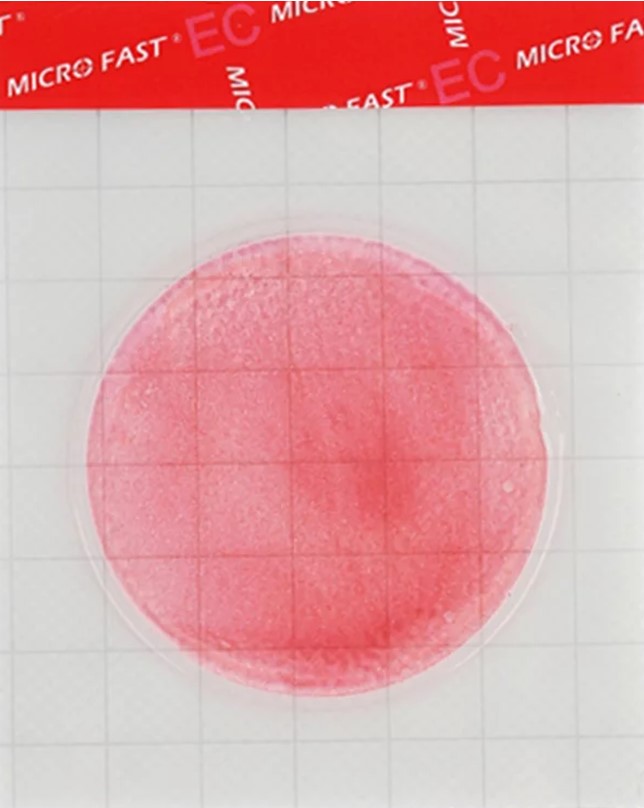“Wet face” or infectious stomatitis in rabbits

Infectious stomatitis is an enzootic viral disease of young rabbits, accompanied by inflammatory processes, ulcerations of the oral mucosa and profuse salivation, which is why it is called “wet muzzle”. A filterable virus is found in the saliva, blood and urine of sick rabbits . Histological examination of prints from ulcers from the mucous membrane of a rabbit's tongue reveals cytoplasmic inclusions in the epithelial cells.
Young rabbits are susceptible to viral stomatitis, starting from the suckling period and up to 3 months. Adult rabbits get sick extremely rarely; experimental infection of mice, rats, and guinea pigs with the stomatitis virus fails.
The disease is registered in all seasons of the year, but more often in spring and autumn. An outbreak of viral stomatitis is facilitated by a decrease in the general resistance of the body of children, sharp fluctuations in temperature, high humidity, crowded housing of animals, and inadequate feed. Starting with isolated cases, the disease quickly spreads among rabbits, covering all young animals.
In permanently unfavorable farms, outbreaks of stomatitis occur after each birth and can cause the death of 30% of the herd and significant losses in growth and weight gain of young stock.
The incubation period lasts 2-4 days, after which clinical signs of the disease appear: redness of the oral mucosa, the appearance of whitish spots or stripes on the cheeks, lips, tongue, painful ulcers, accompanied by copious salivation. Due to difficulty swallowing, saliva flows from the mouth, wets the fur in the submandibular space and on the dewlap, it becomes disheveled, sticks together, and loses its shine. The disease also affects the general condition of the rabbits - they are inactive, depressed, huddle in the corner of the cage, making characteristic slurping sounds, eat food poorly, quickly become exhausted and die on the fourth or fifth day of illness.
A pathological autopsy reveals hyperemia of the salivary glands, erosions in the oral cavity, catarrh of the small intestine and duodenum. The chronic form of stomatitis is usually mild and manifests itself in the form of small ulcers in the mouth, weak salivation and ends with recovery. The diagnosis is made on the basis of clinical signs (excessive salivation, damage to the oral mucosa) and, as a rule, does not cause difficulties.
If infectious stomatitis occurs, sick rabbits are immediately isolated.
Timely treatment of all young animals, including healthy-looking rabbits, gives good results.
Since specific drugs against infectious stomatitis have not been developed, a course of nonspecific therapy is carried out with approved antibiotics, sulfonamides, locally and in the form of intramuscular injections. The oral cavity is irrigated for two to three days with solutions of antibiotics and potassium permanganate.
During treatment, it is also important to prevent the development of bacterial complications,, if possible, eliminate parasitic (helminthic and protozoal) diseases, and stimulate the body’s defenses by strengthening the immune system in young animals.
At the same time, the rabbits' food ration is enriched, including easily digestible feed, fine hay or green grass. If possible, sick rabbits are fed steamed grain, mash, and other soft foods. For preventive purposes, rabbits suspected of being infected with stomatitis are given the same drugs in the mouth that are used for treatment.
To prevent infectious stomatitis, it is necessary to monitor the quality of feed, the living conditions of animals, comply with veterinary and sanitary rules, and carry out preventive measures in a timely manner.
The cages should always be dry and clean; overcrowding of animals should not be allowed; cages, feeders, and drinkers must be regularly cleaned and simultaneously disinfected. For timely diagnosis of the disease, it is necessary to conduct regular clinical examinations of rabbits, paying attention to the condition of the muzzle and oral mucosa.
Read together with it:
- An HSE expert reported on the "evolution of inequality" in access to healthcare.An HSE researcher analyzed Russians' access to healthcare over a ten-year period. In 2021, the influence of financial factors became noticeable for the first time: low income reduces the likelihood of visiting a DOCTOR.Over the ten years from 2011 to 2021, the number of Russians requiring medical care but not receiving it remained virtually unchanged, according to a study by Lyudmila Zasimova, hea...
- He crawled to the icon with prayer. The true story of a man who overcame drug addiction.Alexander Ovchinnikov. Topic News. Our project's hero was a drug addict for many years. The thought that this was a dead end never left him, but his addiction proved stronger. One day, when he could no longer walk, he crawled to an icon in prayer. This became his first step toward a new life. Today, he heads a charity center that helps those who have given up hope and are unable to quit ALCOHOL an...
- Pharmaceutical companies see a threat to EU security due to bacteria in UkraineAntibiotic-resistant superbugs have been detected in Ukrainian soldiers since the beginning of the conflict, and now they pose a threat to Europe, according to a foundation developing antibiotics.The Ukrainian conflict threatens Europe with antibiotic-resistant "superbugs," said Henry Skinner, CEO of the AMR Action Fund, which specializes in investing in antimicrobials. His article was published o...
- Роспотребнадзор подводит итоги контроля мясной продукции в Тамбовской области за 2025 годПоложительные аспекты: Не было выявлено нарушений санитарно-химических показателей, присутствия патогенных микроорганизмов, ГМО, паразитов, антибиотиков и радиационного загрязнения. Проблемные моменты: Отмечается ухудшение по физико-химическим показателям — 5,88% образцов не соответствует стандартам, по сравнению с 1,5% в 2......
- Scientists have identified a human virus comparable to COVID-19.The human respiratory syncytial virus (RSV) may be comparable in severity to influenza and CORONAVIRUS. This is the conclusion reached by Singaporean researchers collaborating as part of the PREPARE program, according to the press service of the Singapore General Hospital. Scientists conducted three studies to assess the severity of the disease, the risk of cardiac complications, and its long-term...
- Ученые узнали о способности прививки от COVID продлевать жизнь при ракеВакцины от коронавируса на основе мРНК продлевают жизнь пациентам с онкологией на последних стадиях, выяснили ученые из США. Препараты активизируют иммунную систему. В итоге вакцинированные прожили почти в два раза дольше обычного Вакцины от коронавируса продлевают жизнь пациентам с онкологией. К такому выводу пришли исследователи из американского центра MD Anderson в Хьюстоне. Результаты исследов...




























































